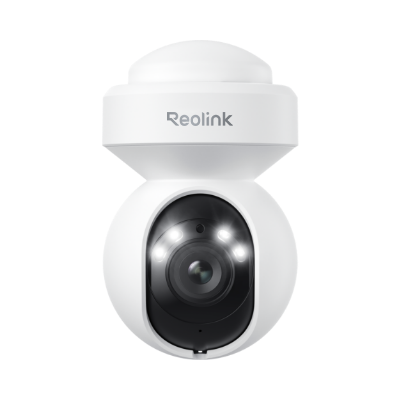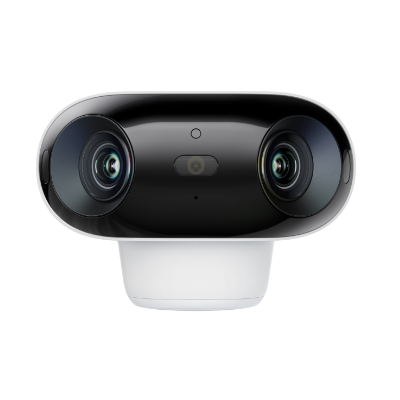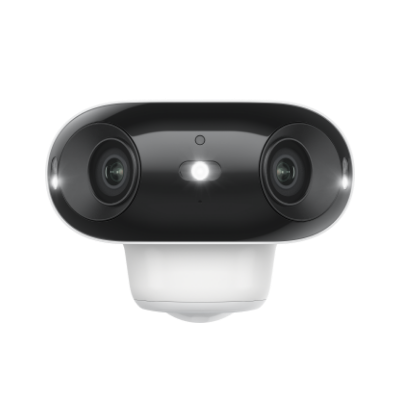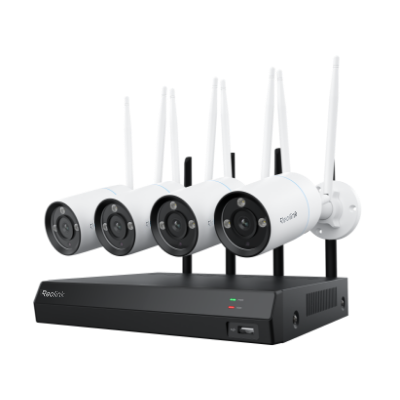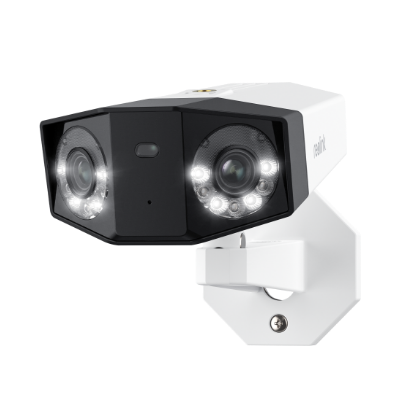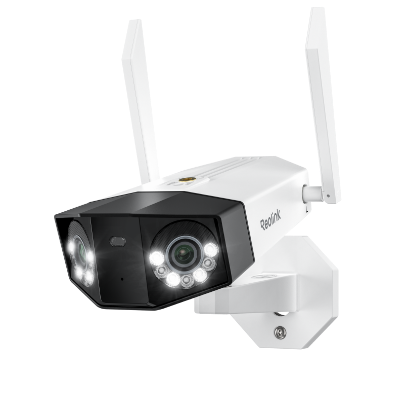1440p vs 4K: What's the Difference?
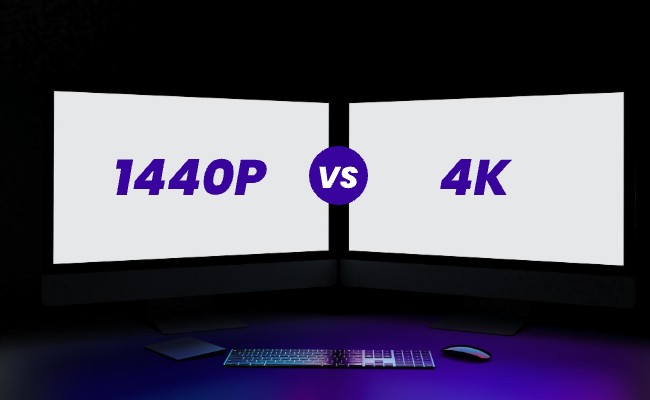
As technology advances, we have seen improvements in the world of digital displays, aiming to provide greater visually immersive experiences. Among these options, we will focus on two resolutions, the 1440p and the 4K.
This article aims to highlight the differences between the 1440p and the 4K resolutions, examining their underlying technical aspects and common applications. By the end of this guide, you will be confident in making informed decisions when choosing between both resolutions. Let’s dive in!
What does Resolution Mean?
Before delving into what separates the 1440p from the 4K resolution, we need to understand what resolution means.
Resolution refers to the number of pixels in a digital display. It is typically expressed as the number of pixels in a display's horizontal and vertical dimensions. The more pixels in a display area, the sharper and more detailed its visuals are.
What is 4K?
4K is used to describe resolutions with a horizontal pixel dimension of approximately 4000 pixels. There are two types of 4K; the cinema standard 4K with a resolution of 4096 x 2160 pixels (also known as True 4K or DCI 4K) and the common standard one with a resolution of 3840 x 2160 also known as 4K UHD (Ultra High Definition).
What is 1440p?
On typical monitors and displays with a 16:9 aspect ratio, the 1440p, also known as QHD (Quad High Definition), has a 2560 x 1440 pixels resolution.
This resolution also has a variant commonly called WQHD (Wide Quad High Definition) which indicates a wider screen than the default QHD. WQHD has a resolution of 3440 x 1440 pixels and a wider aspect ratio than the QHD.
Differences Between 4K and 1440p
The main difference between both resolutions is the number of pixels in the display. 4K has more pixels and, thus, sharper image quality than 1440p.
The table below summarizes the differences between both options.
Choosing Between 4K and 1440p
Your choice between 4K and 1440p will depend on different considerations like budget and purpose. Both options have their strengths, and you ultimately have to make a choice based on your preference.
PC monitor
Monitor resolution describes the visual dimensions of any given display. For PC monitors, the standard resolution of the industry is Full HD 1080p(1920 x 1080). But some manufacturers have launched 1440p monitors, even the 4K ones. For a common 27-inch monitor, 1440p is enough for a better image quality.
There is no denying that 4K monitors will definitely deliver higher image quality than 1440p ones but as PC monitors need to be connected to a host or server, you also have to take other factors into consideration, like hardware functions, GPU,CPU, etc. For example, 4K monitors require more CPU, graphics and CPU resources than 1440p ones.
Gaming
4K and 1440p are the most popular resolutions in the gaming industry. Just like monitors, 4K on-screen content is generally sharper and clearer than the 1440p one. For gamers who own an Xbox One or PS5, if you’re looking at upscaling 1440p to 4K for all of your games, you can tell the difference between these two resolutions right away.
However, not every console is compatible with 4K content. Some top game companies have updated or begun to upgrade their game versions and consoles to fit with 4K contents. If you want to enjoy a better gaming experience, remember to choose gaming devices compatible with 4K content.
OLED TV
OLED stands for “organic light-emitting diode” and is the major TV screen technology used on the market, especially for 4K TV. With this technology, TVs can have higher color contrast and wider viewing angle. Most 4K TVs on the market are OLED ones and they can also play 1440p videos. If you have sufficient budget, choose the 4K OLED TV as your first choice. But if you aren’t ready for the upscaling, 1440p can also guarantee an enjoyable viewing experience.
Camera
Right now there are many 4K security cameras available, which offer higher footage quality and more vivid details. However, 2K 1440p security cameras aren’t obsolete yet. They are still very popular among camera users as they can also capture relatively crisp images and videos.
Bonus Tips: Factors to Consider When Choosing Best Resolution for Gaming
As mentioned above, 4K and 1440p are widely used for games. But many players still don’t know how to choose the right resolution for gaming. Here are some important factors to consider.
Image quality
The first thing to consider is the gaming image quality. Resolution defines the image quality of gaming gaming contents. Pixel density, also known as pixels per inch, is an important parameter to measure resolution for the gaming contents. The industry standard, as of right now, is a solid 300 pixels per inch, which provides a clear, sharp image.
For a 27-inch monitor, 1440p has a pixel density of about 108 pixels per inch, which is far higher than the industry standard. This means that 1440p resolution is already enough for any casual game player. On a monitor of the same size, 4K resolution has a pixel density of 180 per inch. With more details shown up. 4K gaming has attracted many fans and followers.
Refresh rate
The refresh rate of your gaming monitor refers to how many times per second the display is able to draw a new image. This is measured in Hertz (Hz). For example, if your display has a refresh rate of 144Hz, it is refreshing the image 144 times per second.
For the gaming industry, the standard refresh rate is 60Hz. If you want to play competitively, you need a minimum refresh rate of 144Hz and if you want to play at the eSports standard, go with 240Hz.However considering hardwares of your computer or other playing devices, 1440p 144Hz is quite enough.
Frame rate
Video games consist of fast-moving images. When playing games, your monitor presents images at high speed, and then your brain fills in any blanks and creates continuity. Each of those images is called a “frame”. Frame rate is the terminology used to describe the speed at which each frame flips through. “FPS” stands for “frames per second” and usually expresses a certain frame rate of digital devices.
The majority of modern video games are created to achieve a frame rate of 60 FPS, but any frame rate between 30 FPS and 60 FPS is acceptable. That's not to suggest that games can't go above 60 FPS; many do; however anything below 30 FPS may cause animations to stutter and lack fluid motion.
Hardware
Most people choose to play games on their computer as a consequence, strong hardware will be needed to support high refresh rate and compatible frame rate. These hardwares are CPU and GPU.
The Central Processing Unit (CPU) is the primary component of a computer that acts as its “control center.” The more data your CPU can process, the higher refresh rate of video games it supports. What's More, a fast CPU can also provide critical game instructions, including AI, physics, game logic, and rendering data.
The graphics processing unit (GPU) in your computer helps handle graphics-related work like graphics, effects, and videos. So a powerful GPU can guarantee a more stable frame rate and better output of image quality of your games.
Budget
Another thing you need to consider is your budget. 4K monitors will definitely cost more than 1440p ones. Common prices of 1440p monitors are between $200-300. But 4K monitors cost more, like $400-900, depending on its size. If you have a moderate budget and just want to buy a monitor for daily use, a 1440p one is already enough. If you are more professional with enough budget and want to pursue better playing experiences, choose the 4K monitor.
Exploring 4K Resolution Comparisons
When it comes to choosing the right resolution for your display or camera, it's essential to understand the differences between various 4K options. These links provide valuable insights into different 4K resolution comparisons:
- 4K vs. 8K: A detailed breakdown of the distinctions between 4K and 8K resolutions.
- 4K vs. 2K: Explore the pros and cons of 2K and 4K resolutions for your specific needs.
- 4K vs. 5K: Learn about the nuances between 4K and 5K resolutions and when each might be ideal.
- 4K vs. 5MP: Discover the differences between 5MP and 4K resolutions in security camera systems.
- 4K vs. 2160p: Delve into the relationship between 2160p and 4K resolutions for video content.
- 4K vs. Blu-ray: Understand how 4K compares to Blu-ray in terms of video quality.
- 4K vs. QHD: Explore the main differences between 4K and QHD in gaming.
- 4K Resolution Explained: Get a clear explanation of the pixel count in 4K resolution.
These resources will help you make an informed decision when selecting the 4K resolution that suits your specific requirements.
The Synergy Between 4K and WiFi 6
Resolution technology is advancing, blending with various other technologies. The synergy of 4K resolution and WiFi 6 is notable in the world of security cameras. Reolink, known for innovative security cameras, has introduced a series that combines 4K and WiFi 6, taking surveillance to a new level.
4K WiFi 6 Outdoor Security Camera: Reolink E1 Outdoor Pro
This model demonstrates the benefits of integrating WiFi 6 and 4K. WiFi 6 ensures a faster, more stable, and more secure network connection with higher bandwidth, more immediate speed, and less latency. The 4K footage will also deliver more details and capture everything around your property. With a sturdy housing and compact structure, this 4K camera is built to withstand harsh weather conditions and is ideal for outdoor use.
4K WiFi PTZ Camera with Auto-Tracking
4K 8MP Super HD, Smart Person/Vehicle Alerts, 355° Pan & 50° Tilt & 3X Optical Zoom, Auto Tracking, Color Night Vision.
4K Dual-Band WiFi 6 Battery-powered Security Camera: Reolink Argus 4 Pro
This 4K WiFi 6 security camera allows users to choose between two WiFi frequency bands: the 5GHz band for higher speeds and the 2.4GHz band for broader coverage. Combining 4K resolution and Wi-Fi 6 technology, the camera offers unparalleled video quality and lightning-fast connectivity. This powerful duo ensures smooth streaming, minimal latency, and superior stability, allowing you to capture and monitor every detail with precision and reliability.
Additionally, The Argus 4 Pro's battery-powered design allows for flexible installation anywhere, eliminating the need for power outlets or wiring. Its long-lasting battery ensures continuous operation, and the high-efficiency solar panel option offers eco-friendly and cost-effective power.
4k 180° Wire-free Color Night Vision Camera
4K UHD 180° Blindspot-free View; Color Vision Day and Night; 30% More Battery Life; Dual-band Wi-Fi 6; Smart detection.
For consumers that require full-color night vision without apparent spotlights, the Reolink Argus 4 Pro is an excellent choice. Alternatively, if you want an inexpensive solution that still performs well, the Argus 4 standard version is worth considering.
4k 180° Blindspot-free Wi-Fi 6 Camera
4K UHD 180° Blindspot-free View; Dual-band Wi-Fi 6; Smart detection; Easy Installation Anywhere
4K WiFi 6 Security Camera System: Reolink RLK12-800WB4
The concept of 4K WiFi 6 has also been introduced into security systems. The NVR and the cameras in the bundle allow a WiFi 6 connection. WiFi 6 can handle more devices simultaneously, which is fantastic when you want multiple cameras simultaneously. This kit is ideal for systematic home or small business surveillance.
4K Security Kit with Next-Gen WiFi 6
4 pcs 4K Ultra HD Security Cameras; Dual-Band WiFi 6; 2TB HDD 12-Channel NVR for 24/7 Recording; Peron/Vehicle/Animal Detection; IP67 Weatherproof.
Recommend a Security Camera with Higher Resolution than 4K
As demand grows for sharper security footage, Reolink has developed a cutting-edge camera that exceeds 4K resolution standards. An exemplary model is the Duo 3 PoE, boasting remarkable features. Sporting dual 16MP lenses powered by PoE, it delivers exceptionally clear images. Its expansive 180° field of view captures extensive areas at once. Moreover, it autonomously tracks movements, leaving no room for stealthy intrusions. Equipped with color night vision, it ensures clear visuals even in low-light conditions.
Groundbreaking 16MP Dual-Lens PoE Camera
16MP UHD, Dual-Lens, Motion Track, 180° Wide Viewing Angle, Power over Ethernet, Color Night Vision.
For a wireless option with similar features, the Reolink Duo 3 WiFi is a great choice. It offers dual 16MP lenses and a 180° field of view for wide coverage. The camera tracks motion automatically and provides clear color night vision, even in low light. With Wi-Fi 6, it ensures a stable connection for reliable remote monitoring.
Groundbreaking 16MP Dual-Lens WiFi Camera
16MP UHD, Dual-Lens, Motion Track, 180° Wide Viewing Angle, Plug-In WiFi, Color Night Vision.
FAQs
Are 1440p and 4k the same?
No, 1440p and 4K are not the same. 1440p, also referred to as QHD, has a resolution of 2560 x 1440 pixels or 3440 x 1440 pixels. 4K, also known as 2160p or Ultra HD, has a screen resolution of 3860 x 2160 pixels or 4096 x 2160 pixels and produces higher-quality images.
Is there a noticeable difference between 4K and 1440p?
The answer is yes, but only if you sit close to your monitor, display, or TV. The difference becomes insignificant if you are sitting more than 3 feet away from your monitor.
Which one is better, 1440p gaming or 4K gaming?
The answer depends on your preference. If you value sharper image quality over gaming performance, 4K gaming is the better choice. But 4K gaming requires more advanced computer hardware, and many gaming contents haven't been updated to 4K.
1440p gaming offers greater performance with slightly less image quality and has more compatible content.
Does 1440p look good on 27-inch monitors?
Yes, 1440p looks perfect on 27-inch monitors. For instance, a 27-inch monitor with a resolution of 2560 x 1440 enables you to comfortably see material from two browsers side by side without any overlapping. Because of this, 1440p monitors are perfect for multitasking and business applications.
Conclusion
While 1440p and 4K are regarded as high resolutions, they have significant differences. 4K resolutions have more pixels than 1440p, thus delivering crisper and clearer images. However, it trades off performance for sharper details in gaming and is more expensive than a 1440p which balances performance and display quality well.
With this, some might be convinced that the 1440p is a much better choice, but as we said earlier, it boils down to your preference. Some are happy to use a 4K resolution display for everything, and if you can afford it, we say go for it!
Have you used both resolutions before? What do you think? Please share your ideas with us in the comment section below!
Search
Subscribe for the Latest Updates
Security insights & offers right into your inbox

